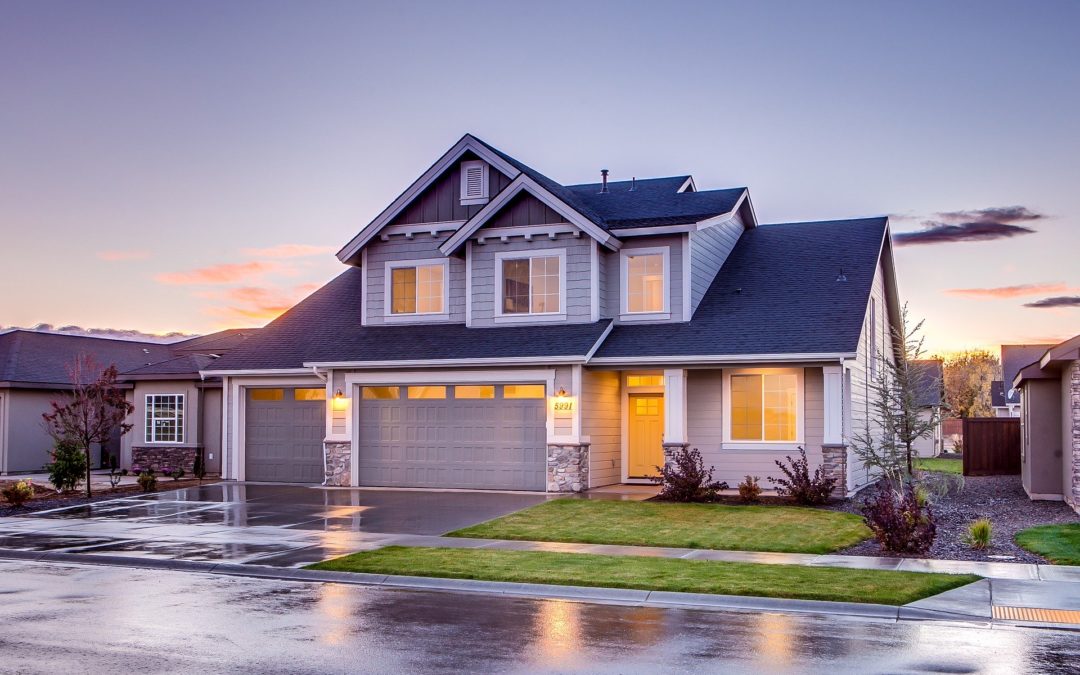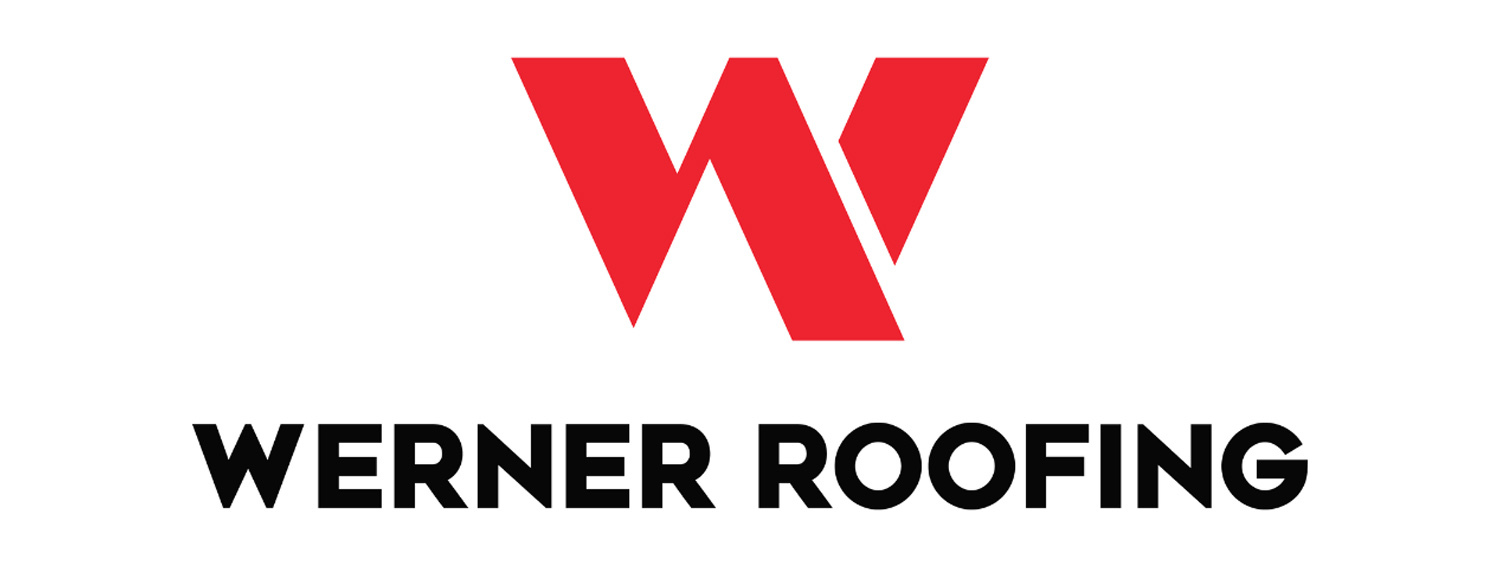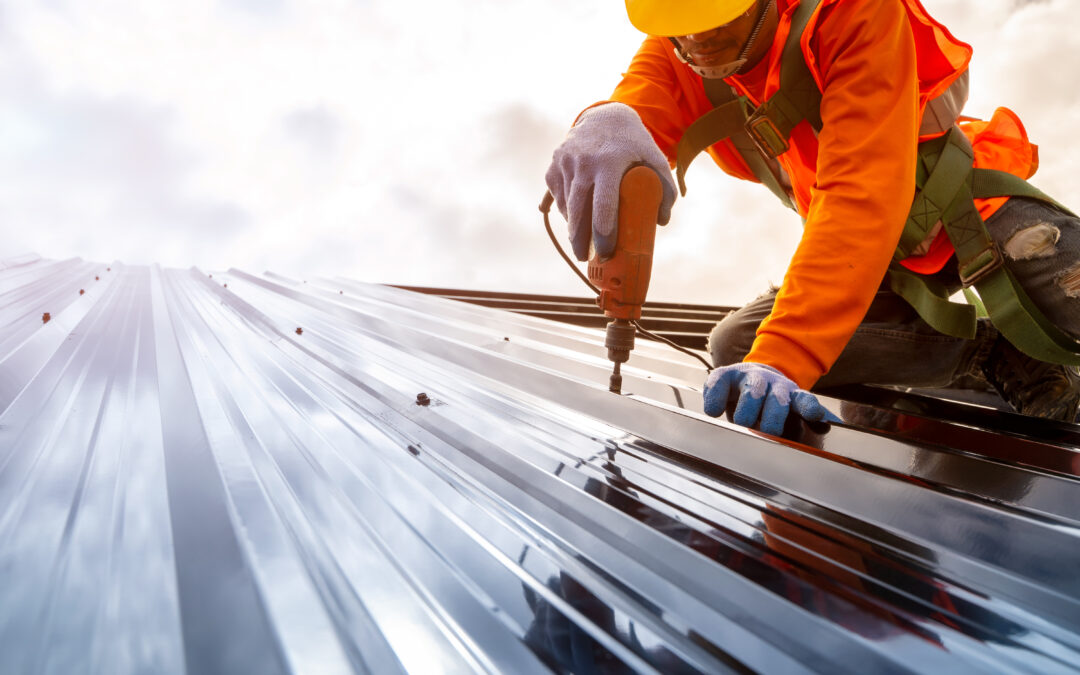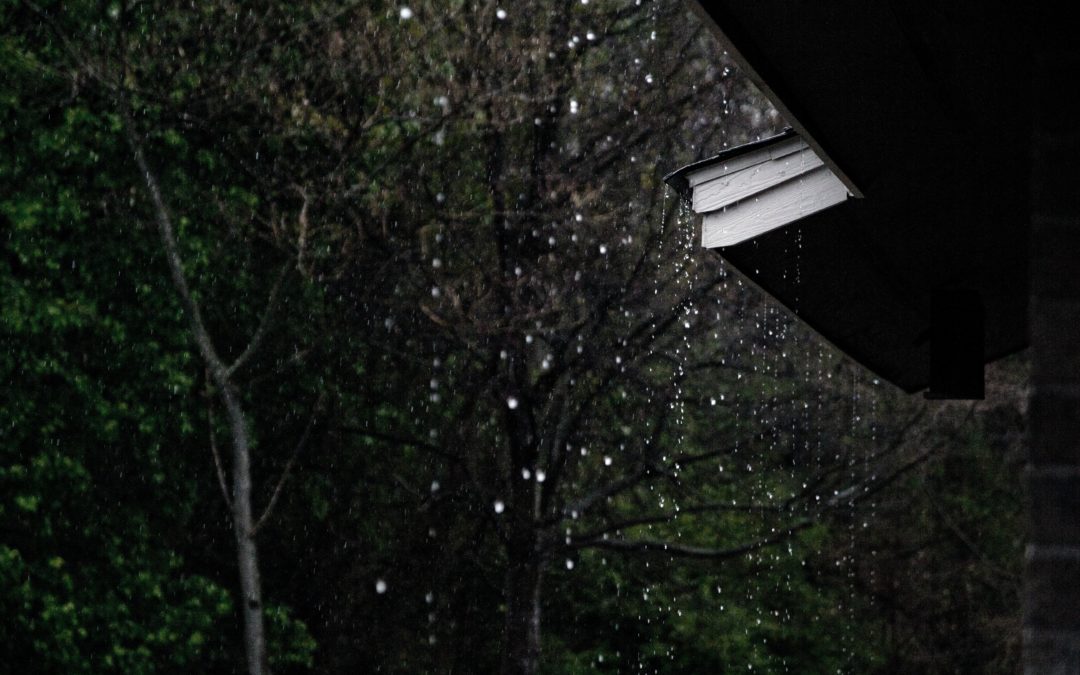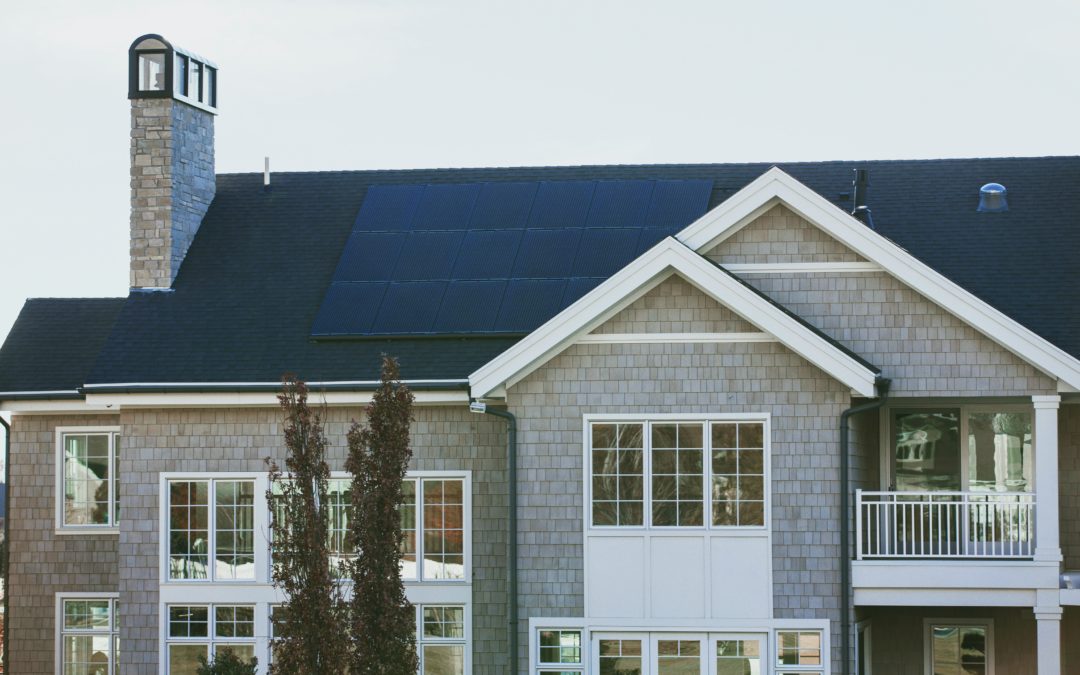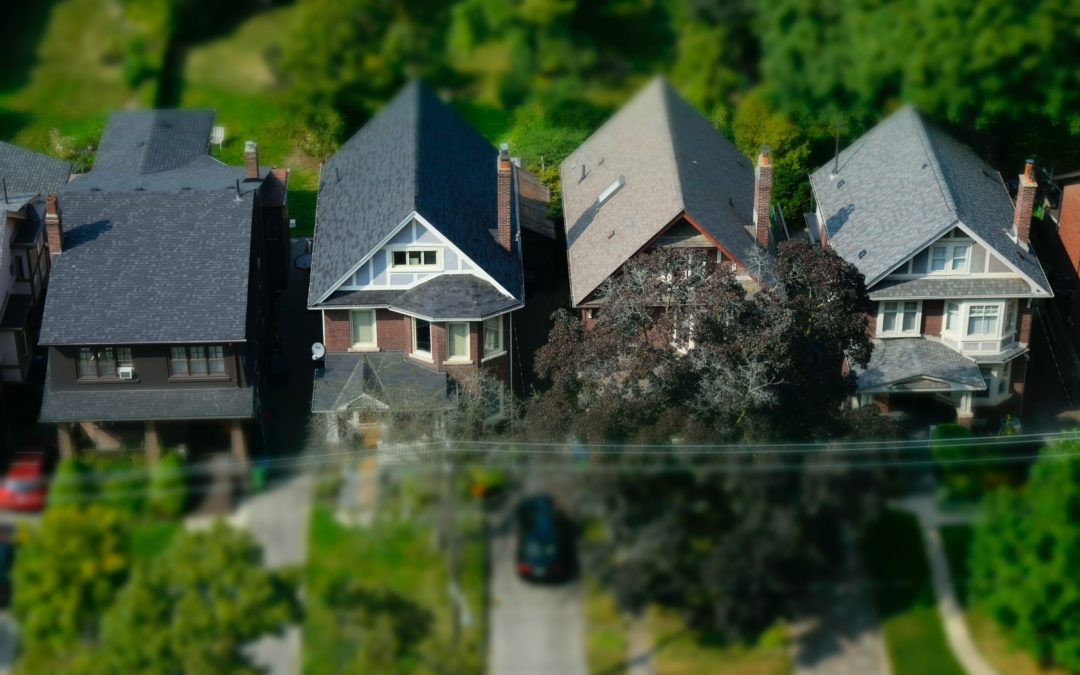A metal roof is an excellent choice for many homes. Metal roofs have exceptionally long life spans — reaching over 50 years — and their durability and minimal maintenance have made them a consumer favorite for decades. Plus, with added features like cool roof coatings that make metal roofs energy-efficient, today’s metal roofs are more popular than ever.
If you’ve decided a metal roof is right for your home, the first decision you’ll have to make is what type of metal roof is best for your home.
4 Types of Metal Roofs
When evaluating te types of metal roofs, you can choose between aluminum, copper, zinc, and steel.
ALUMINUM
Aluminum is a consumer favorite for metal roofs on the market today. It’s durable, lightweight, and naturally corrosion-resistant, which makes it ideal for nearly any home. Today’s aluminum roofing materials come pre-painted, and you can choose from a full range of options from the manufacturer. The metal comes to your roofer ready to install.
Aluminum is easy to manufacture, and since most roofing aluminum is made from recycled, post-consumer products, you can feel good about it environmentally. It can be found in nearly any shape or profile, from aluminum shakes or shingles to a traditional standing-seam metal roof. Though aluminum is a bit more expensive than a conventional asphalt roof, it is less costly than copper and zinc. Also, its durability and lifespan are sure to leave people satisfied they made the right choice, economy-wise.
COPPER
A copper roof is a bold and stylish choice for homes as the material is often praised for its natural beauty and the attractive blue-green patina it forms when exposed to the elements. Copper is also exceptionally durable and holds up well against the elements.
The biggest concern with a copper roof for most homeowners is cost. A complete copper roof can be very pricey, so many homeowners opt for a flash of copper roofing on a porch or a roofing accent like a dormer. Copper also tends to streak and stain other materials as water runs off, so it’s good to consider where you’d like to install copper roofing on your home.
ZINC
Zinc is another long-lasting type of metal roof. Like copper, zinc will patina over time, which makes it more durable and ensures it won’t rust. Since zinc doesn’t need to be coated like aluminum, there’s also no need to alter the original material. Also, If you’re looking for energy efficiency, zinc is 100% recyclable.
Zinc is a popular type of metal roof, though it does have a few cons. Like copper, zinc is very expensive to install. A specialized roofing crew is required, and the material itself is costly. Zinc is a softer metal, so it doesn’t hold up the best to the elements.
STEEL
Steel roofing has long been used for commercial roofs, but is now becoming a popular type of metal roof for homeowners. Steel, which is used for other heavy-duty aspects of construction, is exceptionally durable. It’s also the least expensive metal roofing material on this list and is made from recycled materials.
To combat steel rusting, steel roofing materials are manufactured in three different ways:
- Galvanized Steel Roofing – The most common type of steel roofing, galvanized steel uses a layer of zinc to protect an inner layer of steel from corroding.
- Galvalume Steel Roofing – Instead of using a zinc coating, galvalume steel uses a combination of aluminum and zinc to protect the inner steel layer of roofing. The aluminum offers better corrosion protection and makes for a more uniform appearance on the final product.
- Weathering Steel Roofing – The least commonly used steel roofing material, weathering steel, is composed of two layers of steel. The outer layer is designed to rust, protecting the inner layer. Since this type of metal roof is designed to rust, it’s usually only used as an accent piece to add a bit of character to a home.
The Pros and Cons of Metal Roof Installations
Choosing the right metal roof for you will depend on the look you’re going for, your environment, and your budget. However, once you have chosen the perfect material for your home, it’s time to decide the best type of installation for your material of choice.
EXPOSED FASTENER METAL ROOFING
Exposed fastener roofing is made by overlapping panels of metal and fastening those panels directly to the roof deck or framing through the overlapping face of the metal panels. This type of roofing is called an “exposed fastener” because the fasteners that secure the metal panels to the roof remain visible after installation.
BENEFITS:
- Fast to install. Since exposed fastener roofing systems don’t require hand or mechanical seaming, they’re much faster to install. Your roofer can fasten two panels together at one time, requiring considerably less labor and time.
- Economical. In general, exposed fastener metal roofing is more economical than other options because the metal used for the panels is thinner, they use a lower quality paint system, and the panels are wider.
BEWARE OF:
- Problems with fasteners. Because fasteners are exposed, they can create problems that potentially shorten the lifespan of your roof. If a fastener is installed slightly off-center, too far into the roof, or not far enough, there is a potential for leaks.
- Frequent maintenance. Because of the vulnerability to leaks, you’ll need to complete regular maintenance to check and replace faulty fasteners and clear away any dirt, rust, leaves, or debris that might catch on the fasteners.
Though exposed fastener metal roofs are a more economical investment upfront, the amount of maintenance they need and the potential for leaks and water damage present concerns to some homeowners.
STANDING SEAM METAL ROOFS
Standing seam metal roofs are metal roofs with panels intersecting at raised seams. Unlike exposed fastener roofs, standing seam roofs have hidden fasteners to eliminate some of the common problems associated with exposed fastener roofs.
Standing seam roof panels are attached to the roof using a clip, or they’re fastened to roof decking using a fastener flange. This additional installation care makes standing seam roofs more secure regarding leaks.
BENEFITS:
- Hidden Fasteners. Standing seam metal roofs hide fasteners, eliminating all of the holes in the roof that an exposed fastener roof presents and reducing the concerns of water leaks.
- Energy Efficiency. Metal roofs are naturally very energy efficient, but most standing seam metal roofing panels are finished with a cool roofing coating that works to reflect hot UV rays from the sun. This helps keep your home at stable temperatures year-round and can help you save on those energy bills, too.
- Minimal Maintenance. When compared to other types of roofs, and even other metal roofs, like exposed fastener metal roofs, standing seam roofs need significantly less maintenance. While it’s still a good idea to have an annual inspection completed by a roofer, standing seam roofs don’t need to be checked yearly for leaks around fasteners, rust, or any other issues that other metal roofs may face.
BEWARE OF:
- Higher Cost. Compared to an exposed fastener metal roof, a standing seam metal roof will cost more (though not excessively so).
- Longer Installation. Standing seam roofs take a bit longer to install than other metal roofs because they require careful installation. You’ll want to find a roofing contractor qualified to install standing seam metal roofs because their crew will have the necessary certifications to install that new roof properly.
If you’re planning to invest in a metal roof and want an option that looks amazing and won’t totally break the bank, a standing seam metal roof might be for you. They offer the beautiful, traditional look of a metal roof with the added benefit of sleek, fastener-free seams. They’re also a super-durable, long-lasting roofing option perfect for many homes.
STAMPED PROFILE METAL ROOFS
If you love the look of slate or cedar shake roofs but can’t justify the cost of slate or the maintenance of shake roofs, a stamped profile metal roof just might be the solution for you. Stamped profile metal roofs offer you all the benefits and architectural style of a shingled roof without the drawbacks.
We’ve written a bit about these in a previous blog about metal roofing styles, but it’s good to know that stamped profile metal roofs can be made to look like anything from slate and wood shakes to ceramic, tile, and even the traditional asphalt shingle roof.
BENEFITS:
- Aesthetic. As mentioned above, stamped profile metal roofs can look like various materials and come in different colors and textures to suit any architectural style. The material offers homeowners some of the most luxurious roof styles for a fraction of what the original material would cost.
- Low Maintenance. A stamped profile metal roof will need less maintenance than an exposed fastener metal roof because it’s constructed much like a traditional asphalt roof. There aren’t any exposed parts to cause potential water leaks.
- Durability. Stamped profile metal roofs offer all of the benefits of a shingled roof, with a significantly longer lifespan. Metal roofs, when properly maintained, can last anywhere from 40-60 years, which substantially outlasts an asphalt or cedar shake roof.
BEWARE OF:
- Cost. Though stamped profile metal roofs are much cheaper than tile or slate roofs, they’re still costly compared to a more traditional standing seam metal roof or asphalt shingle roof.
- Installation. Because stamped profile metal roofing is still relatively new, you might have trouble finding a roofer with the product and the crew to install a stamped profile metal roof for you.
Though a bit more expensive than other metal roofs, the stamped profile metal roof covers its cost with its versatility and aesthetic appeal. Stamped metal roofs allow homeowners to employ their creativity and make bold stylistic choices that will last for years.
Werner Roofing Is Here for All Your Metal Roofing Needs
When considering a metal roof for your home, Werner Roofing would love to help! We’re one of West Michigan’s premier metal roofing installation experts, and we can install a variety of attractive metal roof types. For more information, give us a call at 616-844-5382, or leave us a message online today.
